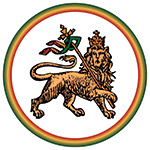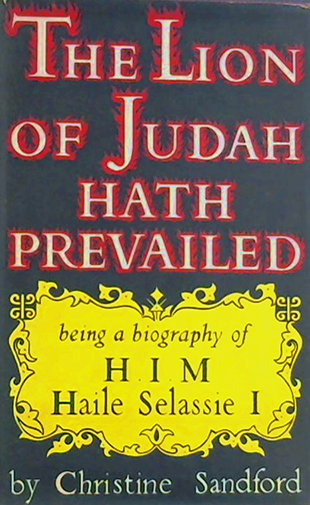THE LION OF JUDAH HATH PREVAILED
14
The Next Ten Years
2. Communications
That the stability of the Government and the development of the resources of the country depend upon good communications needs no emphasis. The Emperor had already begun to tackle the problem before the Italian invasion, and since his return it has been in the forefront of his programme. Problem indeed it is, for the nature of the country, where the road may in a few miles climb the heights of the mountains and plunge again into the deep ravines—and this not once but many times in a day’s journey—makes the solution difficult and costly. Add to this the climate, alternating between the torrential scouring rains of August and September and the wind-swept dryness of October that cracks and scars. The roads too are not for car and lorry alone, they are crossed and trampled by the many animals that graze alongside them or travel along them to market and fair.
The new factor that has enormously eased the situation has been the possibilities opened up by the introduction of air services—at a relatively low cost. It is amusing to watch the local services that ply between Addis Ababa and almost all the outlying provinces load and unload. Here is an old priest from Gondar come down to lay his case before the Abuna in Addis Ababa. With his bundle and his prayer stick he climbs out of the plane that has brought him in a few hours over mountain and valley, river and desert; a journey that twenty years ago would have taken him six weeks of wearisome walking with his mule or donkey to carry his luggage, and a boy to beat them along and enhance his prestige at the same time. The £10 he has paid for his trip would have been eaten up and more by the two travellers and their beast, even if time itself were of no value. Or here comes the Jimma plane and the merchant with his bags of coffee that would have needed a caravan for a fortnight to bring in the load over the steep Omo gorge and up through the long marshy plains where the Hawash spreads out in flood during the rainy season. Ethiopia is essentially air-minded. These services have been made possible by an agreement with Trans World Air-lines whereby they furnish management and technical assistance, including air crews, for a period of seven years. Thus Ethiopia Air-lines Inc. was born and regular flights began in April 1946. The service has been a marked success. Fast Convair air-liners are used on the international routes between Addis Ababa, Nairobi, and several Middle East cities; and Douglas twin-engined planes cover a network of internal lines serving twenty-three towns within the Ethiopian Empire. There has been no fatality on the ninety million passenger miles flown to date. The fleet at present numbers twelve, and is to be added to shortly, as the planes are being increasingly used for freight, and the demands made on the services are more than can be met.
Ethiopian pilots and radio-operators are being trained in preparation for the time when American staff will be withdrawn. The initial financing of the Ethiopian Air-lines was assisted by a loan of Eth.$ 324,089 from Air Fleets Inc., which loan has been repaid in full.
The Franco-Ethiopian Railway has since the war greatly increased its rolling stock and general equipment, and made a thorough overhaul of its bridges and permanent way, which sustained considerable damage during the campaign. It can now carry a traffic of over half a million tons, three times more than its capacity before the war. Since federation considerable sums have been spent on the Eritrean railway connecting Asmara with the port at Massowah, on which port substantial improvements have been made. In the other direction the railway connects with services across the Sudan frontier to Kassala and Khartoum.
The great task of the maintenance, repair, and improvement of the empire’s road system has by no means yet been accomplished, and many roads are still in a very poor state. But matters were speeded up in 1950 by a loan from the International Bank of U.S.$ 6,000,000; finally an Imperial Highway Authority was set up, financed in part by the World Bank, and in part by the Government, to assume control and responsibility for the work. The Authority has quite properly concentrated its attention on the main trunk roads, and in particular upon the road from Assab. This port is likely in the future to become the main outlet from the country.
The upkeep of the secondary roads so essential to the economic development of the country has so far baffled solution. The enormous Italian trente-quatro diesel lorries, which trundle with a sort of ponderous inevitableness to the innermost recesses of the country, collecting produce and distributing the counterpart of consumer goods, create havoc on these roads in wet weather. This makes it almost impossible for the Authority or the local government to keep pace with the maintenance that is necessary. It must be remembered that the Fascist Government spent £ 11,000 a mile on the construction of their road system. It is understood that the Government are contemplating an allocation of Eth.$ 5,000,000 a year for the upkeep of roads and bridges, but it is open to question whether this will suffice.
However, when all is said and done—and much is often said by private owners of cars—the facts remain that the Government can now keep in touch with all parts of the empire by air; that in cases of emergency it can send the forces of law by wagon and lorry to reinforce at any point; that the produce of the country can be moved to the markets of the world by modern means of transport; that each weekend the town dwellers of Addis Ababa can drive their cars 50, 100, even 200 miles out to visit the most wonderful scenery. The barriers within and without are down. To those who can remember the six weeks’ journey of forty years ago, before the capital could be reached from the outside world, or the eighteen days’ journey of only twenty years ago; to those who saw the destruction of 1941, this is a miracle, the significance of which will be evident in relation to the future history of the country.
Electronic edition created and published online by members of the
Emperor Haile Sellassie First Theocracy Reign
Order of the Nyahbinghi

October 22, 2019
